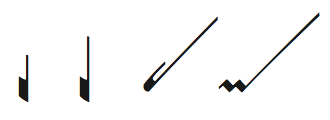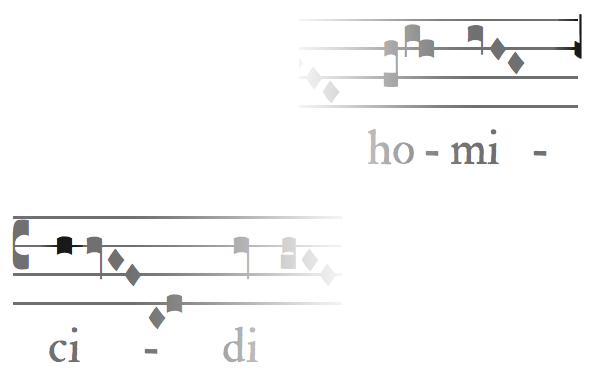CUSTOS Tool
The CUSTOS Tool (French “guidon”, German “Wächter”, Italian “guida”)
The custos (or “direct” or “guide note” ) is an optional sign placed at the end of a system and showing the position of the first note of the next system. (Note that this most useful sign lasted even until J.S. Bach's times, but then disappeared from music books later on...)

The Custos tool creates custos as Finale's expressions automatically. The position of the custos is also handled automatically.
NB: In Medieval 1, you had to enter the custos as a note; this is no longer the case.
Placing a custos on a specific system
- With Finale's Selection tool, select a portion of the system where you want the custos to be placed.
- Click the
 Custos tool on the palette (or invoke it from Medieval's menu.)
Custos tool on the palette (or invoke it from Medieval's menu.)

Placing a custos on every system
- Select all (or don't select anything: Medieval will ask you if you want to process the entire score.)
- Click the
 Custos tool.
Custos tool.
Updating the position of the custos for a system
Deleting a custos
- Simply select the custos with Finale's Selection tool and press Delete.
![]() You can choose the custos character from the Options dialog box.
You can choose the custos character from the Options dialog box.
✶ ✶
✶
Created with the Personal Edition of HelpNDoc: Create help files for the Qt Help Framework
